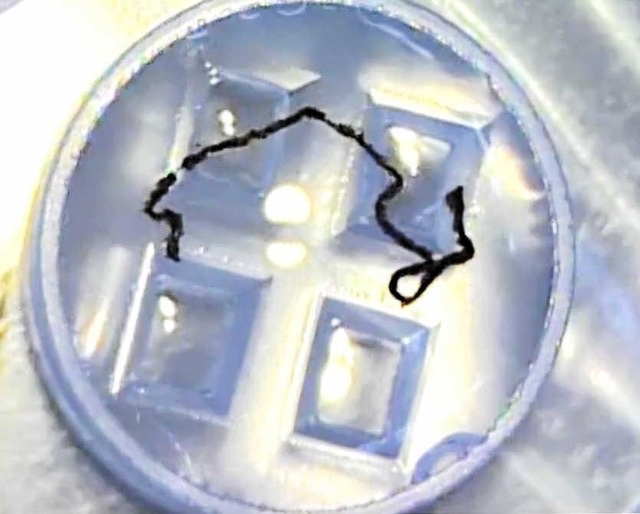
iPS retina cord: smooth progress without complications!
– Transplantation to patients with dry age-related macular degeneration –
Kobe Eye Center Hospital:
December 9th,
Retinal cells made from induced pluripotent stem cells (iPS cells) were processed into strings.
Retinal pigment epithelial insufficiency:
– An intractable disease that reduces vision to the point where it is almost invisible –
The world’s first transplant operation was performed on a patient with retinal pigment epithelial insufficiency.
The announcement was made at an online conference on the same day.
Progressing well without complications:
The patient has already been discharged.
The head of the hospital, Yasuo Kurimoto, reported, “There are no complications, and the progress is going well.”
RIKEN
Advanced Medical Center and RIKEN
In 2014, a retinal pigment epithelium (RPE) cell transplantation operation made from iPS cells was performed.
Neuroretinal sheet:
iPS cells are located outside the retina and are involved in maintaining the light-sensing function.
This is the fifth clinical study of iPS cell transplantation.
Clinical study of RPE cells:
Conventional iPS cells have been cell transplants in the form of sheets or liquids.
The sheet is easy to fix, but it takes time and effort to make.
In addition, surgery is difficult, and liquid cell transplantation is difficult to establish.
Invented a cell-aggregating string:
Therefore, he devised a string-like cell called “cell aggregation string (string)”.
It has the advantage of being easier to fix than liquid.
The cell aggregation string used was about 2 cm long.
In November, I transplanted one to a woman in her 50s whose eyesight was 0.1 in both eyes.
The operation was completed in about 1 hour.
RPE cells made from iPS cells owned by Kyoto University were used.
General | Kobe Shimbun NEXT
https://www.kobe-np.co.jp/news/sougou/202212/0015879161.shtml
iPS Retinal Cells Processed into Strings for Transplantation: Easy to Produce and Establish, Expected to Improve Safety: Kobe Eye Center
https://www.kobe-np.co.jp/news/sougou/202202/0015074438.shtml
iPS retina cord : une progression fluide et sans complications !
– Transplantation à des patients atteints de dégénérescence maculaire liée à l’âge sèche –
Hôpital du centre ophtalmologique de Kobe :
9 décembre,
Les cellules rétiniennes fabriquées à partir de cellules souches pluripotentes induites (cellules iPS) ont été transformées en chaînes.
Insuffisance épithéliale pigmentaire rétinienne :
– Une maladie incurable qui réduit la vision au point où elle est presque invisible –
La première opération de transplantation au monde a été réalisée sur un patient atteint d’insuffisance épithéliale pigmentaire rétinienne.
L’annonce a été faite lors d’une conférence en ligne le même jour.
Bien progresser sans complications :
Le patient est déjà sorti.
Le chef de l’hôpital, Yasuo Kurimoto, a déclaré : « Il n’y a pas de complications et les progrès vont bon train.
RIKEN
Centre médical avancé et RIKEN
En 2014, une opération de transplantation de cellules d’épithélium pigmentaire rétinien (EPR) à partir de cellules iPS a été réalisée.
Fiche neurorétinienne :
Les cellules iPS sont situées à l’extérieur de la rétine et sont impliquées dans le maintien de la fonction de détection de la lumière.
Il s’agit de la cinquième étude clinique sur la greffe de cellules iPS.
Etude clinique des cellules RPE :
Les cellules iPS conventionnelles ont été des greffes de cellules sous forme de feuilles ou de liquides.
La feuille est facile à réparer, mais cela prend du temps et des efforts à faire.
De plus, la chirurgie est difficile et la greffe de cellules liquides est difficile à mettre en place.
A inventé une chaîne d’agrégation de cellules :
Par conséquent, il a conçu une cellule semblable à une chaîne appelée “chaîne d’agrégation de cellules (chaîne)”.
Il a l’avantage d’être plus facile à fixer que le liquide.
La chaîne d’agrégation de cellules utilisée était d’environ 2 cm de long.
En novembre, j’en ai transplanté un à une femme dans la cinquantaine dont la vue était de 0,1 dans les deux yeux.
L’opération a été réalisée en 1 heure environ.
Des cellules RPE fabriquées à partir de cellules iPS appartenant à l’Université de Kyoto ont été utilisées.
Général | Kobe Shimbun SUIVANT
Cellules rétiniennes iPS transformées en chaînes pour la transplantation : faciles à produire et à établir, censées améliorer la sécurité : Kobe Eye Center
iPS Retina Cord: Reibungsloser Fortschritt ohne Komplikationen!
– Transplantation bei Patienten mit trockener altersbedingter Makuladegeneration –
Kobe Augenzentrum Krankenhaus:
9. Dezember,
Netzhautzellen aus induzierten pluripotenten Stammzellen (iPS-Zellen) wurden zu Strängen verarbeitet.
Retinale Pigmentepithelinsuffizienz:
– Eine hartnäckige Krankheit, die das Sehvermögen bis zu einem Punkt reduziert, an dem es fast unsichtbar ist –
Die weltweit erste Transplantationsoperation wurde an einem Patienten mit retinaler Pigmentepithelinsuffizienz durchgeführt.
Die Ankündigung erfolgte am selben Tag auf einer Online-Konferenz.
Guter Verlauf ohne Komplikationen:
Der Patient wurde bereits entlassen.
Der Leiter des Krankenhauses, Yasuo Kurimoto, berichtete: “Es gibt keine Komplikationen, und der Fortschritt geht gut voran.”
RIKEN
Advanced Medical Center und RIKEN
Im Jahr 2014 wurde eine Transplantation von Zellen des retinalen Pigmentepithels (RPE) aus iPS-Zellen durchgeführt.
Neuroretinale Folie:
iPS-Zellen befinden sich außerhalb der Netzhaut und sind an der Aufrechterhaltung der Lichtwahrnehmungsfunktion beteiligt.
Dies ist die fünfte klinische Studie zur iPS-Zelltransplantation.
Klinische Studie von RPE-Zellen:
Herkömmliche iPS-Zellen waren Zelltransplantate in Form von Folien oder Flüssigkeiten.
Das Blatt ist leicht zu reparieren, aber die Herstellung erfordert Zeit und Mühe.
Außerdem ist eine Operation schwierig, und eine Flüssigzelltransplantation ist schwierig zu etablieren.
Erfand eine Zelle-aggregierende Zeichenfolge:
Daher entwarf er eine zeichenkettenartige Zelle namens “Zellaggregationszeichenfolge (Zeichenfolge)”.
Es hat den Vorteil, dass es leichter zu fixieren ist als Flüssigkeit.
Der verwendete Zellaggregationsfaden war etwa 2 cm lang.
Im November habe ich einer Frau in den Fünfzigern, deren Sehvermögen auf beiden Augen 0,1 betrug, einen transplantiert.
Die Operation war in etwa 1 Stunde abgeschlossen.
Es wurden RPE-Zellen verwendet, die aus iPS-Zellen der Universität Kyoto hergestellt wurden.
Allgemein | Kobe Shimbun WEITER
iPS-Netzhautzellen, die zu Fäden für die Transplantation verarbeitet werden: Einfach herzustellen und zu etablieren, soll die Sicherheit verbessern: Kobe Eye Center